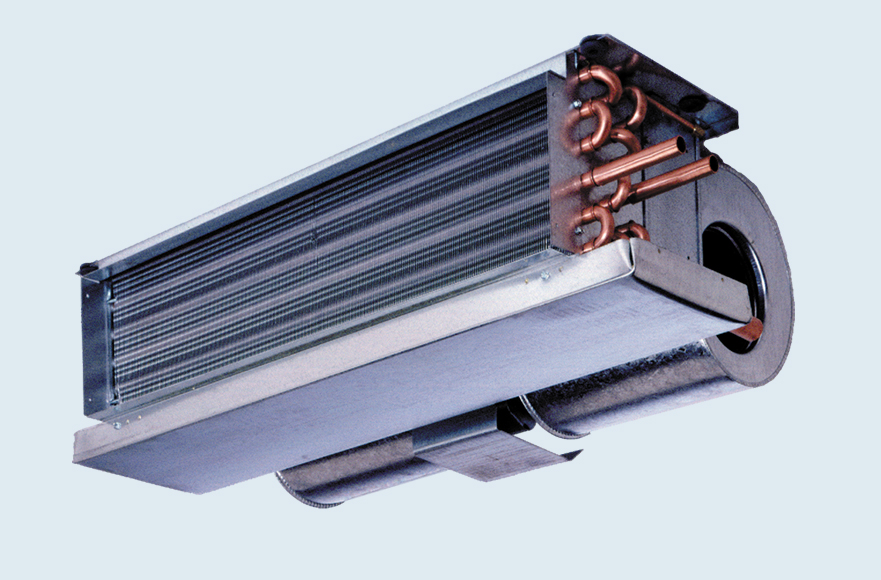Coil and Air Handler Questions & Answers

Southwest Coil receives many systematic and application questions every month. Here are a few you might find interesting or may find to be familiar. In the middle of summer, many of these problems can really determine an HVAC systems efficiency and reliability.
We service a large community hospital. Each year our cooling in certain systems seems to be reduced, and we think it centers around the chilled water coils. Can you give me some areas we need to review?
Bud – Service Contractor – St. Louis, Missouri
Any time you look at inefficiency with chilled water coils, you need to look at the following:
- Increasing filter changeout
- Increasing cleaning of coil core
- Possible use of UV light if there is biological build-up
- Ensuring the water flow and the temperature of the water are as specified
- Checking the CFM air flow in the system and increasing the drive RPM on the supply fan to overcome resistance
I have responsibility for 50 small to intermediate tonnage packaged rooftop units at our facility. Please explain the difference between coils in a system for R-22 and R-410A. We still have 20 or so old R-22 units.
Paul – Service Technician – San Leandro, CA
The major difference is the higher pressure that’s required to operate the R-410A system versus the R-22 system. The evaporator coil needs to be constructed with heavier materials, different circuitry and different feeding devices that include distributors, leads, and valves. Normally, you can’t use a R-22 coil for a R-410A application.
We service a high-rise apartment/condo facility that has 230 vertical concealed fan coil units. There are multiple fan coil units within each residential unit. They have never air conditioned the condo units properly. What should I look for as the reason? Is there anything I can do to help?
Georgy – HVAC Contractor – Chula Vista, CA
Three of the biggest problems with fan coil units in this type of application (vertical or horizontal) are 1) the lack of a performance service factor when the units were designed, 2) air throw to high load areas (windows and deck openings), and 3) fouling of coils and filters over the life of the units.

Many units have ductwork, grilles, etc. attached to the units. The extra static pressure can drastically reduce overall air flow. We’ve seen 3-ton units that need 1200 CFM of air flow to achieve capacity that only measure 1050 CFM. That’s a 12-1/2% decrease in air flow.
Many times, these units are located near the center of the condo units where piping is run through multiple floors. This means the air throw might be too far from the highest load areas where the air is needed the most. This creates “hot spots” within the condo unit.
Most units are designed with 3-row coils. At 3 rows, the coils ability to remove humidity is marginal at best. This is when the coil is clean. Many facilities have very poor schedules for cleaning coils and changing out filters. Remember: A marginal piece of equipment was installed in the first place, and the lack of servicing over the years can make it much worse. Sometimes a simple coil changeout can enhance the efficiency of the existing units.
Other problems that can exist are 1) lack of water flow to some units, especially at or near the top of the building, 2) higher water temperature (example: 48 degree water versus 45 degree water) which is normally due to lack of pipe insulation from the chiller to the fan coil units in question, and 3) thermostat locations that turn the units off while large areas of the condo unit have “hot spots”. The thermostats must be installed in areas that will allow the units to run and minimize the hot spots.
We work with the county and have many chillers and condensing units that have holes in the condenser coils – mainly at the connection end where the tubes go through the sheet metal. Most of the holes have occurred after multiple years of service. Can you shed light on this problem?
Brendon – West Palm Beach, FL
Condenser coil tubes run through a tube sheet before they enter the finned surface. Leaks at or very close to this location are always “vibration leaks”. The leaks are created due to the tube moving 24/7 over the years until the tube rubs into the tube sheet enough that holes eventually appear. Why does this happen? This has become more prevalent in our industry over the last 20 years due to increased competition that strives to reduce costs and to reduce the overall weight of these units. The frame and structure of the units is not as heavy duty as it used to be, and the moving equipment in these packages develop vibration that radiates to the condenser. You can add to that bad unit designs whereby the compressors or condenser prop fans are too close to the coils.
You can have 5 years without leaks and suddenly have multiple yearly leaks. This dynamic is created by the length of time from installation until the 24/7 tube sheet movement creates the hole and/or the unit has more vibration than it did when it was first installed.
Condenser coil replacement is recommended, and a structural specialist is also recommended to “beef up” the different areas that will reduce the vibration. You don’t want to replace coils and have leaks develop immediately.
Southwest Coil has a complete line of products and services to assist you with retrofit and replacement requirements. We’ve seen it all. Give us a call or email us your concerns and inquiries, and we will give you an intelligent and well thought out proposal. We will also provide you with alternative construction or arrangements that might improve longevity and system efficiency.
Contact the experts at Southwest Coil for all your coils needs!
We’re the best in the business – take advantage of
our decades of knowledge and experience.


